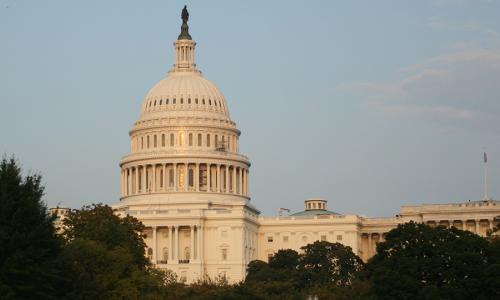Chronic illness takes a terrible toll on the people of the United States, shortening and diminishing lives while it sends our national health care bill soaring. There is strong evidence that much of this damage is attributable to our diets, which are too light on fruits, vegetables and whole grains, and too heavy on added sugar, processed foods, refined grains, and salt.
We could help ourselves by eating better—but this isn't as easy as it sounds. Cost, availability, time, and other barriers complicate many people’s efforts to enjoy a healthier diet. Both the burden of diet-related illness and the obstacles to addressing it through healthier eating are distributed unequally. Rates of diseases such as type 2 diabetes and hypertension are significantly higher for communities of color—particularly African Americans—and for low-income communities. And these same communities are likely to have poorer access both to sources of affordable, healthy food and to health care services, making chronic diet-related illness an issue of racial and economic justice, as well as public health.
Moreover, if we’re not careful, as a nation, about how we treat the environment and natural resources on which our food supply depends, even more of us could find it harder to enjoy a healthy diet in the future.
The role of the Dietary Guidelines
The federal government has a potentially powerful tool for addressing this problem in the Dietary Guidelines for Americans, a set of science-based nutrition recommendations updated at five-year intervals by the Department of Agriculture (USDA) and the Department of Health and Human Services (HHS). These recommendations are important because they inform nutrition standards for federal programs from school breakfast and lunch to the Special Supplemental Nutrition Program for Women, Infants, and Children (WIC) and provide valuable teaching tools for public health professionals and education for the general public.
The Dietary Guidelines is based on the work of a committee of leading health and nutrition experts, the Dietary Guidelines Advisory Committee (Committee), and typically reflects the best available science. In fact, the Guidelines’ advice has changed little over the last 40 years: recommendations typically call on Americans to consume more fruit, vegetables, and whole grains; limit foods that contain high amounts of sugar or sodium; and develop healthy eating habits based on moderation and variety.
But the food industry spends tens of millions of dollars lobbying to weaken the Dietary Guidelines, sometimes successfully. In the 2015 edition, for instance, Committee findings on the improved sustainability of diets that are higher in plant-based foods and lower in animal-based foods never made it into the final guidelines. Many experts saw this decision as an overt override of scientific evidence by meat industry lobby groups that opposed the recommendations.
What will the 2020 Dietary Guidelines for Americans cover?
For the 2020 guidelines, the Committee has been asked to make recommendations, for the first time, for maternal nutrition and for infants and toddlers 24 months and younger.
Other topics to be addressed include the relationship between dietary patterns and diet-related chronic disease risk, with a new focus on life stages. The guidelines will also examine various health risks and benefits associated with added sugars, beverages (including alcohol, fruit juice, milk and milk alternatives, and sugar-sweetened beverages), dietary fats, frequency of eating, and seafood.
Detailed information about the topics and questions being reviewed by the Committee, including research protocols and draft conclusions, are available on the Dietary Guidelines website. The Committee is expected to complete its scientific report in May 2020, and the USDA and HHS is due to issue final Dietary Guidelines by December 2020.
Sustainability and diet: an important issue the Dietary Guidelines needs to address
Our diets have implications that extend far beyond our individual health outcomes. They also affect the types of food we produce, and how we produce them—and this, in turn, has implications for the long-term sustainability of our food system. Current average US diets contribute to environmental impacts such as biodiversity loss, climate change, and degradation of natural resources that may threaten the future availability of a healthy food supply, putting healthy diets further out of reach for many.
Dietary sustainability is more than simply an environmental concern: it’s a matter of intergenerational justice, and requires that our food system is also socially and economically viable over the course of many years. The Dietary Guidelines should help us eat in ways that not only promote our own health, but also help ensure that our grandchildren and their grandchildren will be able to do the same.
As noted above, the 2015 Committee recommended incorporating sustainability concerns into the guidelines, but Congress, influenced by industry lobbying, intervened to prevent this. Recent research underlines the critical importance of sustainable diets. We are urging the 2020 Committee to once again incorporate this science into its recommendations, as we explain in our 2020 policy brief, In Support of Sustainable Eating.
Our policy recommendations
The federal government must act with urgency to meet pressing challenges to public health. Our policy recommendations pertaining to the development of the 2020-2025 Dietary Guidelines include:
- The Committee’s scientific report and final federal guidelines should address the relationship between dietary patterns and environmental sustainability.
- The final guidelines should identify and commit to complementary actions to support anti-poverty programs and make healthy food more accessible for low-income populations and communities of color.
- Congress should enable more publicly funded research on diets that are healthy, environmentally sustainable, and socially and economically viable.
- Congress should make substantial targeted investments in the implementation of the guidelines, including holding federal agencies and programs accountable for applying the guidelines.
Standing up for science in the Dietary Guidelines process
Strong federal dietary advice is critical to our health and the health of our children and communities. An engaged public—including health and nutrition professionals—needs to let the Committee know that we are counting on them to deliver strong, science-based recommendations. In particular, we should urge the Committee to review the research on sustainable diets in those recommendations.
The public comment period for the 2020 Dietary Guidelines for Americans is still open—but it’s closing soon. You can download our comment guide here. Write today to urge the Committee, the USDA, and HHS to draft and publish guidelines that are consistent with current science and prioritize vulnerable communities.






